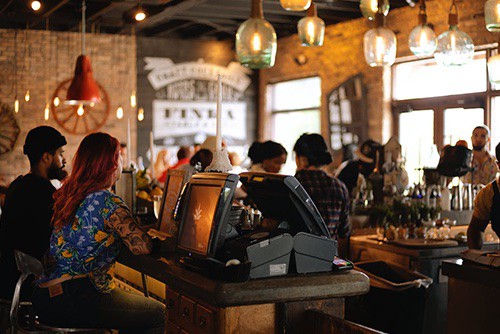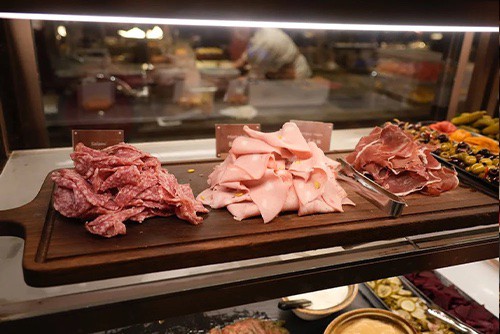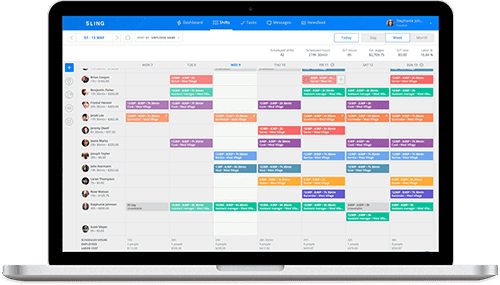9 Tips for Improving Restaurant Operations
Learn about the most common restaurant positions you’ll need to hire whether y...

Restaurant operations management is essential for the long-term health of your business. It’s like working on the business rather than in the business and, done well, may help you move your operation to new levels of success.
In this article, we examine the specific goals of restaurant operations management and discuss a number of ways to help you improve the program in your own business.

Restaurant operations management (sometimes referred to as ROM) is the set of processes and procedures that provides a framework for all of the day-to-day activities of your business.
These essential activities include everything from scheduling your team, assigning tasks, and managing inventory to controlling labor costs, executing payroll, and complying with labor laws.
While your business may be running fine right now, small inefficiencies can multiply and grow, become entrenched and overwhelming, and affect the long-term success of your restaurant.
An efficient ROM program can prevent little problems from becoming big problems and help keep your business running like a well-oiled machine.
Restaurant operations management is very much akin to organizational strategy — they are both complex and comprehensive programs that govern large chunks of your business activity.
They are also composed of smaller, more specific goals that inform the decisions you make for your restaurant.
For organizational strategy, those specific goals are corporate level strategy, business level strategy, and functional level strategy.
For restaurant operations management, those specific goals may include:
Your ROM program — and the specific goals and strategies it addresses — may differ from this list in some ways, and that’s OK.
Not every restaurant is exactly the same. It stands to reason, then, that while your business may share a few goals with other businesses, it will also have its own unique set of goals to contend with.

Many things need to go right for your restaurant to open its doors each day — everything from accepting orders, prepping food, and readying the front of the house to running staff meetings and ordering supplies for the next day.
That’s why it’s so important to make clear plans for all the tasks that need to happen throughout the day.
Without such plans, your restaurant operations management may deteriorate to the point that your team starts to miss crucial activities.
When that happens long enough, and on a large enough scale, your customers may begin to notice.
To ensure that you have plans for every eventuality, start by outlining all the aspects of your daily operation. Then, create a standard operating procedure for each and make sure everyone knows whose responsibility it is to accomplish that task.

One of the largest expenses that most restaurants have to contend with is food inventory — the ingredients they need to produce the food they serve every day.
But it’s about more than just ordering as much inventory as your storage spaces can hold and hoping for the best.
Controlling food inventory as part of your restaurant operations management is also about reducing food waste and ensuring food freshness so that the dishes you serve live up to the quality you and your customers demand from your business.
Ideally, you want to maintain your inventory so that your team has exactly what they need for the day’s activities without causing your business to overspend on items that won’t sell or that take too long to use.
You may have the perfect operations management program in every other regard, but if you don’t have the team to execute it, your business may be just as bad off as if it didn’t have a ROM program in place.
To make the most of the processes you put in place, take the time to perfect — or, at least, improve — your hiring and onboarding system.
Doing so may result in a whole host of benefits, including:
For more information on hiring an onboarding for success, check out these articles from the Sling blog:

Many managers mistake training as nothing more than a way to teach new employees to execute their jobs according to your business’s unique standards and procedures.
While that is part of the training process, there’s more to it than just saying, “Here’s how we do it.” Effective training is a way to help your employees not just perform their jobs but perform their jobs with greater competency, fewer mistakes, and higher overall quality.
With the right training program in place, your team will likely feel more qualified to fulfill their responsibilities, and the overall ROM may improve by leaps and bounds.
A key way to improve your overall ROM program is to do everything you can to manage food costs.
Normally, that involves finding the best price for the food you use on a regular basis and contracting with the right suppliers.
It also involves effective menu pricing, menu engineering, and meal planning down to the last ounce so that you don’t overspend on food that will sit in your inventory where it’s not making your business any money.

Using the right point-of-sale (POS) system or restaurant management software (like Sling) can help you gather and harness the power of data for the betterment of your team and your business.
With the right data in hand, you may be able to identify how certain aspects of your restaurant perform every day, week, month, and year and make more informed decisions about how to improve the overall ROM process.
Team efficiency also plays a large role in the effectiveness of your ROM program.
For example, in some cases, you may need 10 employees working at one time in order to reach a desired level of operational effectiveness.
But, when you take steps to increase team efficiency — either through training, engagement exercises, or something else — you may only need eight employees to reach that same level of operational effectiveness.
Such an increase in efficiency may help the overall operation run smoother, and it may also help you spend less for the same amount of productivity.
And, when your business can perform the same amount of work with fewer employees, your overall labor costs — one of the largest expenses your business will face — may go down enough that you can redirect those funds to other essential restaurant activities.

One of the best ways to improve your restaurant operations management is to set aside time to focus exclusively on the program. The Sling app can help.
Not only can Sling help you schedule time to improve the ROM program itself, but it can also help you simplify and streamline many of the other activities that go into ensuring your business runs smoothly.
The Sling suite of tools includes:
For more free resources that can help you take your business to the next level, visit GetSling.com today.
See Here For Last Updated Dates: Link
This content is for informational purposes and is not intended as legal, tax, HR, or any other professional advice. Please contact an attorney or other professional for specific advice.
Schedule faster, communicate better, get things done.